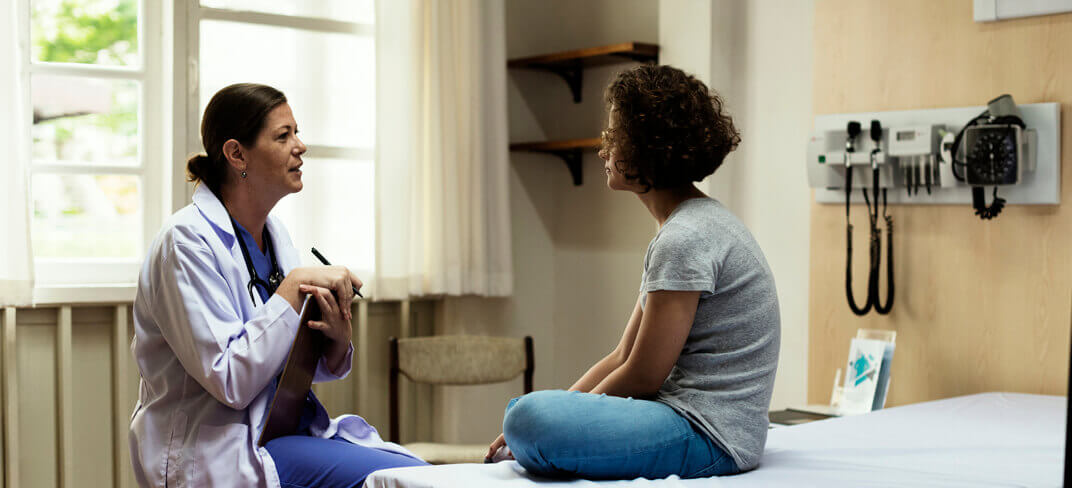What Does a Urogynecologist Do?

If you're experiencing issues like bladder leaks, urinary incontinence, uterine prolapse, chronic pelvic pain, dyspareunia (pain during intercourse), or other pelvic floor disorders, you may need to consult a urogynecologist. If you're wondering, "What does a urogynecologist do?", this article will help you understand. Let's explore the conditions and disorders treated by this specialist and what to expect during a urogynecological visit.
What is Urogynecology?
Urogynecology is a medical specialty that lies between gynecology and urology, focusing on pelvic floor dysfunction in women. Urogynecologists are surgeons trained in either gynecology or urology with a broad scope of practice and extensive expertise, addressing the prevention and treatment of conditions affecting women's genital, urinary, sexual, and ano-rectal health.
Urologist, Gynecologist, and Urogynecologist: What’s the Difference?
Urologists diagnose and treat disorders and conditions affecting the urinary system in men, women, and children.
Gynecologists specialize in the health of the female reproductive system, including the uterus, fallopian tubes, ovaries, vagina, and breasts.
Urogynecologists possess skills in both specialties but are specifically trained to treat pelvic floor disorders in women.
What is the Pelvic Floor?
The pelvic floor, in both men and women, is composed of the muscles and connective tissue in the lower pelvis that supports the pelvic organs.
Women and men have different urinary systems due to the distinct anatomical structure of the pelvic cavity. In women, this includes the uterus, vagina, and vulva, which contribute to greater weakness in the bladder support structures. Female hormones also significantly impact pelvic floor dysfunctions. Hormonal changes, for example, can lead to muscle laxity, which often occurs during menopause and also after pregnancy and childbirth.
For these reasons, conditions such as urinary incontinence, pelvic floor prolapse, and cystitis are more common in the female population. Other risk factors for pelvic floor problems include:
- Constipation
- Smoking
- Surgical procedures in the pelvic area
- Overweight
- Chronic cough
Conditions Treated by a Urogynecologist
Some health issues treated by a urogynecologist include:
- Pelvic Pain: Pain associated with the pelvic area or during intercourse.
- Fistulas: Abnormal openings that develop between the intestine and the vagina or between the bladder and the vagina.
- Stress Incontinence: When urine leaks out during coughing, sneezing, laughing, or sudden movements.
- Fecal Incontinence: Accidental bowel leakage. Causes include injuries or weakness in the pelvic floor muscles.
- Urinary Tract Infections: When bacterial infections occur in the bladder, causing symptoms like burning during urination.
- Pelvic Organ Prolapse: When one or more pelvic organs slip out of place and protrude into the vagina.
- Overactive Bladder or Urgency Incontinence: Sudden urges to urinate. With an overactive bladder, one may need to get up multiple times at night to urinate.
What to Expect from a Urogynecological Visit
During the first visit, the urogynecologist collects information about the patient's medical history to conduct an assessment. In addition to a standard gynecological exam, a pelvic examination is performed, and based on the disorder and symptoms observed, further tests may be requested or conducted:
- Cystometry: Shows problems with bladder emptying and filling.
- Cystoscopy: Examines the inside of the bladder using a small camera inserted through the urethra.
- Pelvic Ultrasound: Allows the doctor to observe the bladder and uterus.
- Urodynamic Testing: Assesses the bladder's ability to hold and empty urine.
Urogynecological Treatments
Treatment depends on the type of disorder and the specific needs of the patient. The specialist may suggest a variety of therapeutic options to address pelvic floor issues or simply alleviate symptoms.
The effectiveness of treatments varies based on the severity of the problem: some mild issues respond well to lifestyle changes and physical therapy, while others may require more aggressive treatment, such as surgery.
Lifestyle Modifications
The doctor may recommend lifestyle changes, such as:
- Achieving and maintaining a healthy weight: Being overweight puts stress on the pelvic floor. Even a 5%-10% reduction in body weight can reduce incontinence.
- Being mindful of when and what you drink: Drinking too much water before bed can increase nighttime trips to the bathroom. Caffeine can irritate the bladder and increase urination.
- Quitting smoking: Women who smoke have a higher risk of pelvic floor problems.
- Regular physical activity: Helps maintain a healthy weight and supports regular bowel movements, as constipation can pressure the pelvic floor.
Physical Therapy
Urogynecologists work closely with physical therapists specializing in pelvic floor rehabilitation. They may suggest:
- Biofeedback Rehabilitation: Sensors placed in the pelvic floor area reveal contraction capacity during exercises, helping improve awareness and control of the muscles and sensitivity of the pelvic floor.
- Bladder Retraining: Teaches how to urinate on a schedule and reduce urinary leakage.
- Kegel Exercises: Specific exercises that can assist women with mild to moderate pelvic floor issues by contracting and relaxing pelvic floor muscles to strengthen them.
Pessary
A pessary is a device made of rubber or silicone that is inserted into the vagina, between the vaginal fornix and the pubic bone, to support the organs and prevent prolapse. It can also help with bladder control by applying pressure against the urethra.
Outpatient Procedures and Surgeries
Depending on the diagnosed condition, the urogynecologist may suggest one of the following options:
- Botox: Known for treating wrinkles, it can also be used for overactive bladder.
- Filler Agents: These gels narrow the urethra to reduce urinary leakage.
- Electrical Nerve Stimulation: A device is implanted to help activate the nerves controlling bladder or bowel function.
- Surgery: Considered if other treatments are ineffective or deemed necessary, such as for treating pelvic organ prolapse and urge incontinence.
If you think you need a consultation with a specialist, learn more about the services at UPMC Salvator Mundi International Hospital: